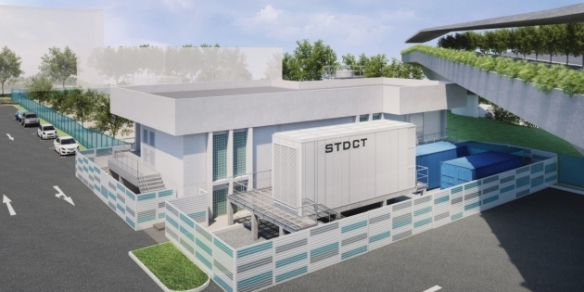Manufacturing trial-and-error … virtually
By Lum Ka Kay March 28, 2016
- Reduces cost and time to market
- Adoption rate in Malaysia still low

PROTOTYPING is crucial to the product development process. Companies need to build and test prototypes to evaluate the effectiveness of a design, and to make potential improvements on a trial-and-error basis.
It is often a time-consuming and expensive endeavour, and this is where virtual reality (VR) technology can play a part, according to ESI Group technical engineer Dinaesh Singh.
“Instead of spending a lot of money on building a physical prototype, manufacturers can leverage on VR where they can virtually test out new designs,” he told Digital News Asia (DNA) in Kuala Lumpur recently.
Virtual prototyping involves computer-aided design (CAD), computer-automated design (CAutoD) and computer-aided engineering (CAE) software to validate a design before committing to making a physical prototype.
Founded over 40 years ago, French-based ESI offers what it calls virtual engineering solutions that help industrial manufacturers replace physical prototypes by virtually replicating the fabrication, assembly, and testing of products in different environments.
In 2011, ESI acquired German VR solutions provider IC.IDO (I see – I do) to boost the visualisation capabilities of its products.
IC.IDO specialises in collaborative decision-making solutions, primarily serving industries that manufacture highly elaborate products across multiple sites.
Its VR technology enables customers to present, manipulate in real time, and exchange product information virtually, and resolve manufacturing and serviceability issues in an immersive and distributed environment.
Low adoption rate

Dinaesh said that the adoption rate of virtual prototyping in Malaysia is still extremely low, although he did not provide any figures.
“We’ve approached many manufacturers and players in the automotive industry, but the response has been less than enthusiastic.
“I suppose this has to do with the weak economy, while many are still reluctant to leave their comfort zone to adopt something new like this,” he declared.
According to Dinaesh, IC.IDO’s technology enables product teams to perform collaborative and immersive design reviews.
“There’s a lot of back-and-forth between designers and manufacturers, where both parties do not communicate to each other much.
“Designers just design and then submit them to the manufacturers … and that’s it. If the manufacturers do not find the design suitable, they’ll have to send the design back for a redesign.
“Yet the simulation process enables designers to come up with an optimum design with most of the basic problems eliminated, so it saves a lot of time that way,” he argued.
Dinaesh said most of IC.IDO’s customers are from the automotive industry like Audi, Mercedes-Benz, and Ford [corrected], which use the technology to visualise crash test simulation results.
“Our solution helps players in the industry to handle an increasing number of decision points and parallel workflows with more agility and efficiency,” he said.
Related Stories:
Proton accelerates automotive design with Autodesk
Dassault sees room for growth in 3D CAD market
How Industry 4.0 can transform the manufacturing landscape
Building Singapore’s ‘digital twin’
For more technology news and the latest updates, follow us on Twitter, LinkedIn or Like us on Facebook.


